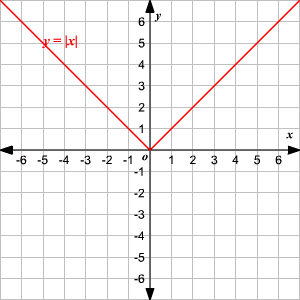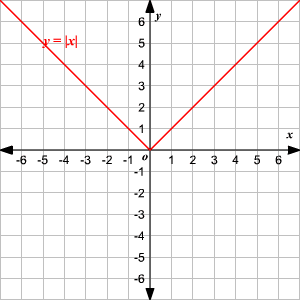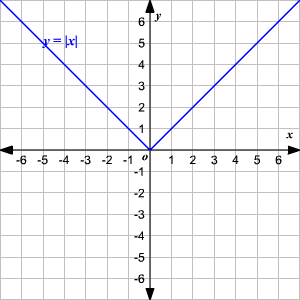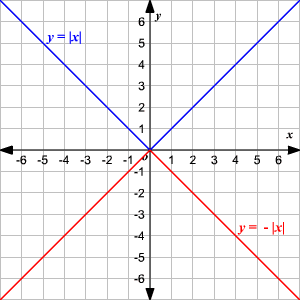How To Find The Domain Of An Absolute Value Function
Absolute Value Functions
An absolute value function is a function that contains an algebraic expression within absolute value symbols. Recall that the absolute value of a number is its distance from on the number line.
The absolute value parent function, written as , is defined as
To graph an absolute value function, choose several values of and find some ordered pairs.
| −2 | 2 |
| −1 | 1 |
| 0 | 0 |
| 1 | 1 |
| 2 | 2 |
Plot the points on a coordinate plane and connect them.

Observe that the graph is V-shaped.
() The vertex of the graph is .
() The axis of symmetry ( or -axis) is the line that divides the graph into two congruent halves.
() The domain is the set of all real numbers.
() The range is the set of all real numbers greater than or equal to . That is, .
() The -intercept and the -intercept are both .
Vertical Shift
To translate the absolute value function vertically, you can use the function
.
When , the graph of translated units up.

When , the graph of translated units down.

Horizontal Shift
To translate the absolute value function horizontally, you can use the function
.
When , the graph of is translated units to the right to get .

When , the graph of is translated units to the left to get .

Stretch and Compression
The stretching or compressing of the absolute value function is defined by the function where is a constant. The graph opens up if and opens down when .

For absolute value equations multiplied by a constant ,if , then the graph is compressed, and if , it is stretched. Also, if a is negative, then the graph opens downward, instead of upwards as usual.

More generally, the form of the equation for an absolute value function is . Also:
- The vertex of the graph is .
- The domain of the graph is set of all real numbers and the range is when .
- The domain of the graph is set of all real numbers and the range is when .
- The axis of symmetry is .
- It opens up if and opens down if .
- The graph can be translated units horizontally and units vertically to get the graph of .
- The graph is wider than the graph of if and narrower if .
How To Find The Domain Of An Absolute Value Function
Source: https://www.varsitytutors.com/hotmath/hotmath_help/topics/absolute-value-functions
Posted by: griggssomearesove.blogspot.com

0 Response to "How To Find The Domain Of An Absolute Value Function"
Post a Comment